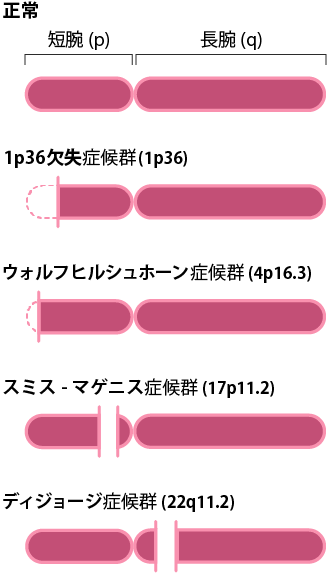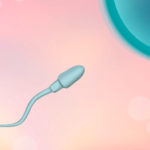
What is Microdeletion syndrome?
Microdeletion syndrome is a condition caused by the deletion of a gene at a specific position in a chromosome.
As the name micro implies, they range in size from 500 000 bases in the smallest cases, and are usually caused by deletions of two to three million bases. The size and position of the deletion determines the severity of the condition and the various symptoms associated with developmental delay, such as mental retardation. In addition, most microdeletion syndromes are spontaneous and occur regardless of maternal age.
This means that it is not always worth testing pregnant women of any age, young or old.
Microdeletion syndrome is testable by Hiro Clinic NIPT
DiGeorge syndrome is said to be second only to Down syndrome in terms of the number of surviving individuals. This is thought to be related to the relatively good life prognosis. The following four microdeletion syndromes, including DiGeorge syndrome, can be tested for with Hiro Clinic NIPT. All of these are domestic tests. No positive scores are currently available for microdeletions due to the small number of specimens.
| Name of case | DiGeorge syndrome | 1p36 deletion syndrome | Smith Magenis syndrome | Wolf Hirschhorn syndrome |
|---|---|---|---|---|
| Suffering area | 22q11.2 | 1p36 | 17p11.2 | 4p16.3 |
| Maximum frequency | 1/2000 | 1/5000 | 1/15000 | 1/50000 |
| Minimum frequency | 1/6000 | 1/10000 | 1/25000 | 1/96000 |
Defective sites in four microdeletion syndromes
Four microdeletion syndromes are caused by defects in the ‘long arm of chromosome 22’, ‘short arm of chromosome 1’, ‘short arm of chromosome 17’ and ‘short arm of chromosome 4’. The first number written on the affected area below is the chromosome number, followed by ‘p’ for the short arm and ‘q’ for the long arm. The short arm refers to the upper part of the chromosome and the long arm to the lower part. The next number refers to the number counting from the centromere in the middle.


If positive, an amniotic fluid test is recommended
If the test result is positive, the clinic strongly recommends amniocentesis. After amniocentesis, the amniotic fluid must be subjected to microarray or exome analysis.
Few national laboratories offer this test. If you are interested in having your amniotic fluid analysed to check its condition, please contact our clinic. We will refer you to a laboratory.
Hiro Clinic NIPT plans that include testing for microdeletion syndrome are N-Guard AM plan, N-Scan BM plan, N-Scan GM plan, N-Scan FM plan, N-Advance GM+ plan and N-Advance FM+ plan. For more information, click on the button below to visit the inspection plan page for more detailed information. Please read on.









